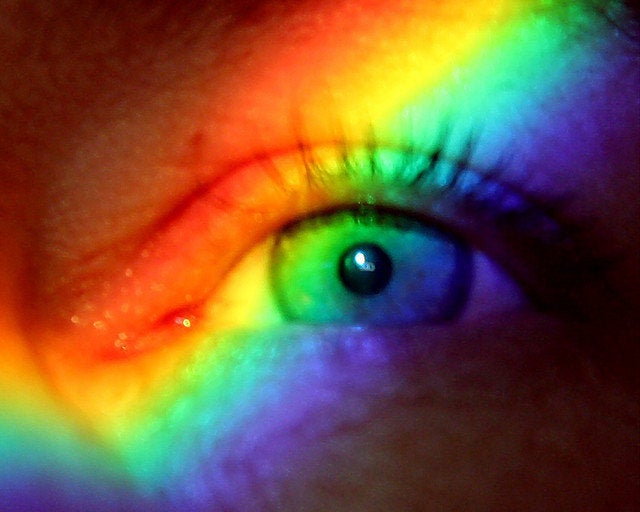
The world is a colorful place, and scientists suspect that it's a lot more colorful for some people than for others. Preliminary research suggests that a small percentage of people can perceive about 100 million colors, as compared with the roughly one million colors most of us can see.
Are these people super human? They’d probably like to think so--and who can blame them--but to really understand this strange phenomenon, you must first understand a bit about the color-perceiving "cone cells" that line the backs of the eyes.
Most animals are so-called "dichromats," meaning their eyes contain two kinds of cone cells. But along with certain other primates, most humans are "trichromats," meaning their eyes have three kinds of cone cells. Since each cone cell is capable of perceiving about 100 different colors, the total number of colors a trichromatic person can perceive is 100^3, or one million.
Then there are "tetrachromats"--like certain fish, birds, and insects, some humans are believed to be tetrachromatic, meaning their eyes have four different types of cone cells. So, do the math, and human tetrachromats should be able to see 100 million different colors. Of course, since none of us really knows how the world looks to everyone else, the people with this form of superhuman vision have no notion of their own special ability.
“It is proven that some women have four cone types that could serve tetrachromatic color vision,” said Dr. Jay Neitz, a color vision researcher and ophthalmology professor at the University of Washington in Seattle. “The frequency of these women and exactly what these women are doing with their extra cone is less clear.”
Tetrachromacy would likely appear in women with sons or fathers who are colorblind. The genes for the cone cells that process red and green are found on the X chromosome, of which females have two. Tetrachromatic women are believed to carry the genes for three normal cone cell types and one mutant type.
Neitz estimated only about 2 percent of women have the genetic mutation that results in the extra retina cone, and there's still no test to reliably predict whether someone really has “super vision” or not. But researchers are working to identify the few tetrachromats among us.
Dr. Gabriele Jordan, a color vision researcher at Newcastle University in England, surveyed a sample of women with a colorblind child, according to Discover. She found a doctor in northern England who became the first documented tetrachromat in history. The woman, referred to only as cDa29, was able to identify subtle computer-generated color distinctions that would appear as just one tone to the common eye.
“Seeing 100 million colors is probably pretty mind boggling,” Neitz said. "Men probably could not handle it. That could be why it is restricted to women."